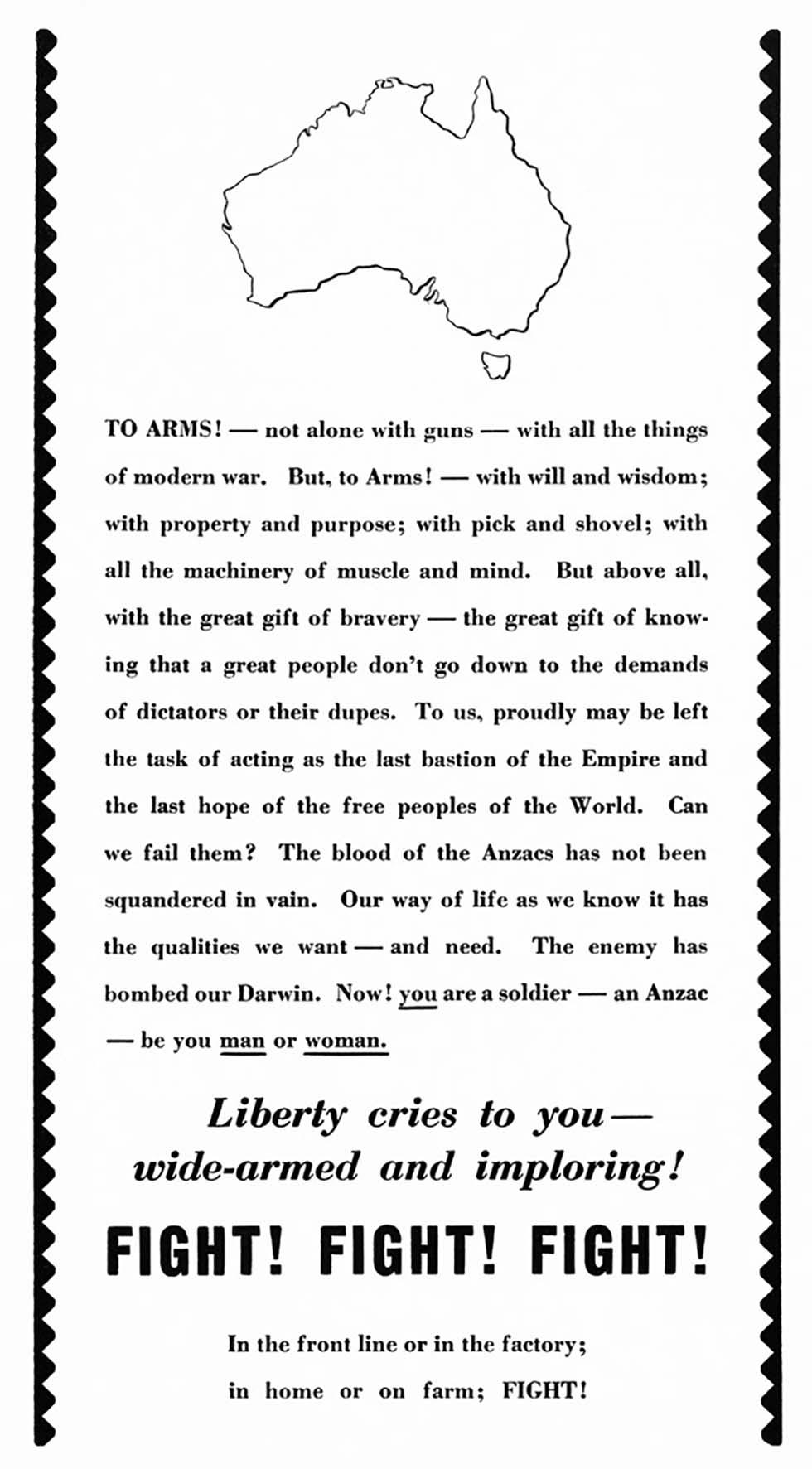
War propaganda poster
Aboriginal and Torres Strait Islander people should be aware that the National Archives' website and collection contain the names, images and voices of people who have died.
Some records include terms and views that are not appropriate today. They reflect the period in which they were created and are not the views of the National Archives.


War propaganda poster
[Black and white map of Australia.]
TO ARMS! – not alone with guns – with all the things of modern war. But, to Arms! – with will and wisdom; with property and purpose; with pick and shovel; with all the machinery of muscle and mind. But above all, with the great gift of bravery – the great gift of knowing that a great people don’t go down to the demands of dictators or their dupes. To us, proudly may be left the task of acting as the last bastion of the Empire and the last hope of the free peoples of the World. Can we fail them? The blood of the Anzacs has not been squandered in vain. Our way of life as we know it has the qualities we want – and need. The enemy has bombed our Darwin. Now! you [underlined] are a soldier – an Anzac – be you man [underlined] or woman [underlined].
[Large italicised text:] Liberty cries to you – wide-armed and imploring!
[Large bold text:] FIGHT! FIGHT! FIGHT!
In the front line or in the factory;
in home or on farm; FIGHT!
This is a black-and-white poster showing a map of Australia and text urging Australians to 'Fight! Fight! Fight!'. The text calls for men and women to join in the fight against the enemy on the front line or the home front to defend freedom.
Learning resource text © Education Services Australia Limited and the National Archives of Australia 2010.
Learn how to interpret primary sources, use our collection and more.
